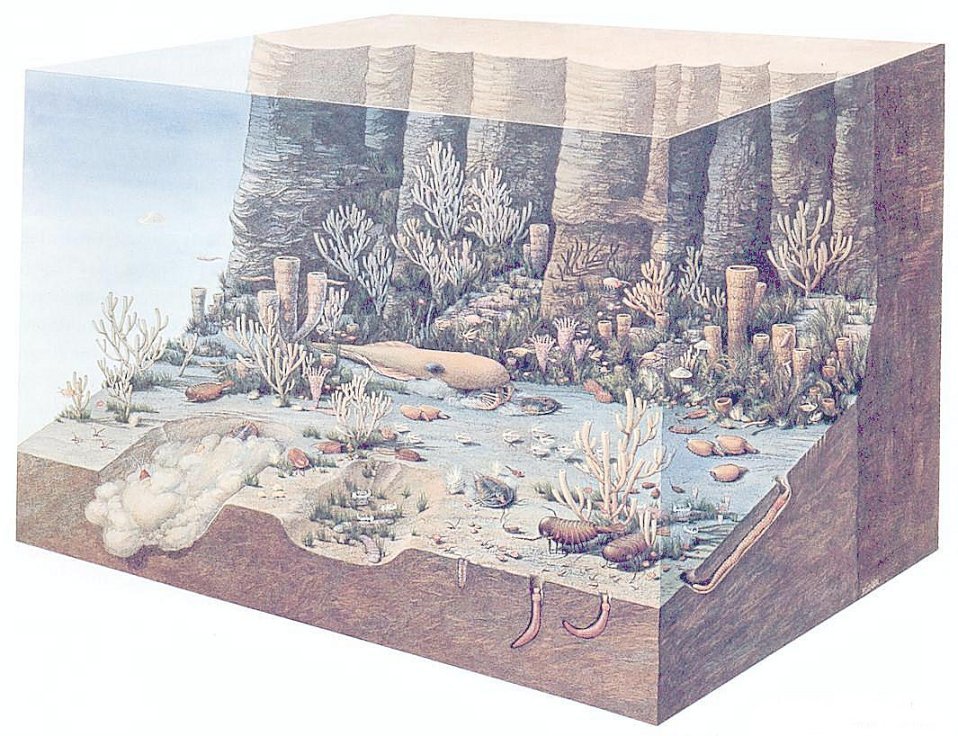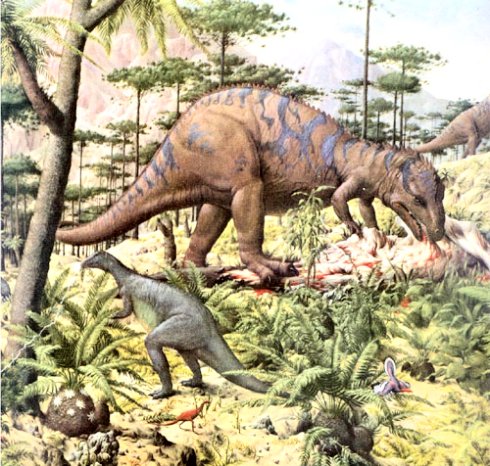Serendip is an independent site partnering with faculty at multiple colleges and universities around the world. Happy exploring!
Change Over Time: Making Sense of the Diversity of Life
Photos of Us Searching for Homologies of Ourselves
What do you see?

To use Jeff Cohen's heuristic metaphor: What would the world look like if you were a very observant mole
that popped up every few hundred, thousand years?

http://www.cartage.org.lb/en/themes/Sciences/Paleontology/Paleozoology/Precambrian/Precambrian.htm
Precambrian - only aquatic simple cells - 750-590mya

http://universe-review.ca/R10-19-animals.htm
Cambrian - Diversity Explosion (life still aquatic) - 590-500mya
http://www.dkimages.com/discover/Home/Science/Earth-Sciences/Palaeontology/Early-Environments/Jurassic/Jurassic-2.html
Ordovician - First Land Plants - 500-440mya

http://www.scientific-art.com/portfolio%20palaeontology%20pages/carbperm.htm
Carboniferous - Fern and Conifer Jungle & Age of Amphibians - 360-286mya

http://universe-review.ca/R10-19-animals.htm
Cretaceous - Final Days of Dinosours - 144-65mya
To use another Jeff Cohen heuristic tool, Life as we know it today is a palimpsest on the thin biosphere veneer of the earth. Further, some of what we see today is poking through from ancient times.
Photos of Us Conducting this Search

http://www.totallychoice.com/index.php/?p=265



Comments
Looking for Homologies
Diversity
Diversity of Life
The activities were highly effective for me because Wil and Anne have created an atmosphere in which we could use our own background knowledge base, bounce ideas off each other, and have the time to process what we were experiencing through trial and error. Having the opportunity to hear other ideas/opinions enables students to process their own understanding of a topic, and engages them in a higher level of thinking. This is inquiry learning at its finest!
Diversity of Life
Change is the Only Certainty
Wil's workshop today was very helpful in linking the past to the present. I was totally engaged as we went through the various activities. The biggest problem was to stay in class because my mind wandered back to school and how I would adapt the activites to my classes this fall.
Anne's comment about looking for similarites was very poignant. When I did yesterday's activities my observations only made sense when the other group shared their data with us.I think that finding similarities is a safe starting place. It is through recognizing our similarites that it becomes easier to accept our differences.
Morning Response
Diversity of Life
Creative Flow
What I Saw
Today's session was exciting, mind-boggling, hands-on, dynamic and fun! I enjoyed the activities because they engaged not only my curiosity, my conscious, and my unconscious mind but also my body. Everything worked together to create a story that I would enjoy re-enacting with my students! Thanks Wil!
Also, I wanted to encourage Ashley. You have all the great qualities of an excellent teacher. Keep using the energy and skill God gave you and He will see you through all things! Excellent presentation!
Change Over Time or Similarities
Inquiry-based Science Education: "A Tough Road"
"When you get done playing all these games, when do you actually teach physics?"
Dora Wong, the Haverford College science librarian who joined us for our discussion of "inquiry-based education" on Friday, just forwarded me this article from The Chronicle of Higher Education: "The Tough Road to Better Science Teaching." It describes the wide-spread resistence, in the science departments of research universities, to just the sorts of inquiry-based teaching we've been exploring in this institute (typified in the quote above), and the responses to those critiques, based on findings from educational psychology and cognitive science.
Change--or Persistence?